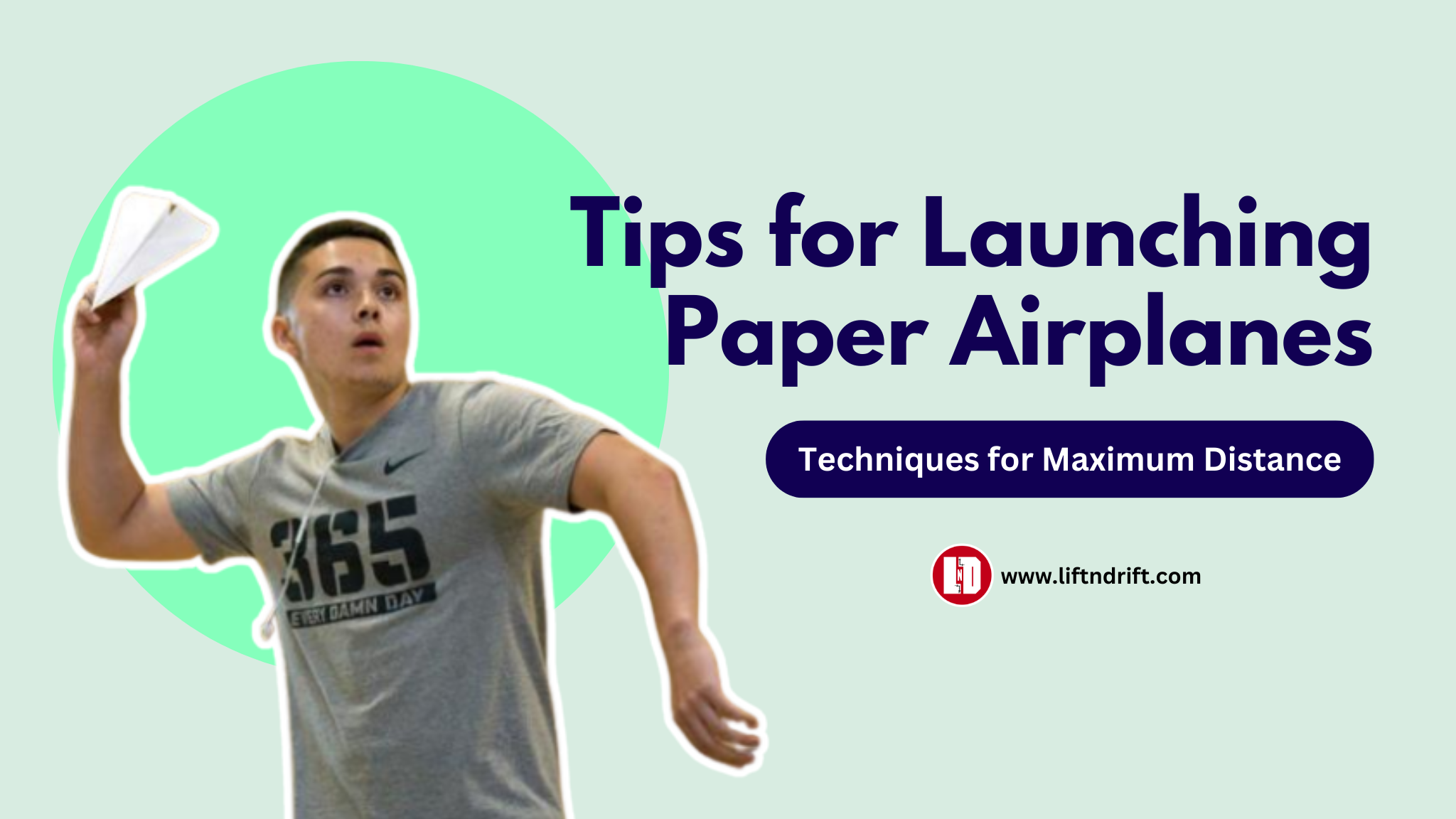Are you ready to embark on an exciting journey of launching paper airplanes? It’s a timeless pastime that never fails to capture the imagination of both young and old. Whether you’re a seasoned paper pilot or a beginner looking to soar to new heights, this comprehensive guide will equip you with the tips for launching paper airplanes, you need to create paper airplanes that fly with astonishing distance and grace. So, grab a sheet of paper, and let’s dive into the art of paper airplane flight!

Table of Contents
| 1. Introduction |
| 2. Choosing the Right Paper |
| 3. Basic Paper Airplane Designs |
| 4. Advanced Paper Airplane Designs |
| 5. Tips for launching paper airplanes |
| 6. Frequently Asked Questions |
Introduction
Before we delve into the intricacies of paper airplane construction, it’s essential to understand the fundamentals of flight. To grasp the science behind paper airplanes and gain insights into the aerodynamic principles that govern their flight, visit Liftndrift. There, you’ll discover the wonders of lift, drag, and thrust, and how they contribute to the flight dynamics of your paper creations.
Choosing the Right Paper
The choice of paper is a crucial factor in determining the performance of your paper airplane. While any ordinary paper will work, certain types yield better results. For optimal results, opt for lightweight paper such as printer paper or origami paper. These papers offer a good balance between weight and durability, allowing your airplane to glide smoothly through the air. If you want to explore different paper options and learn about their effects on flight, check out on Liftndrift’s website.
Basic Paper Airplane Designs
When it comes to creating paper airplanes, simplicity can often lead to surprising results. Here are a few classic designs that have stood the test of time:
1. The Dart: This sleek design is known for its speed and distance. It’s a beginner-friendly choice that requires only a few folds. Find step-by-step instructions on how to fold a Dart at Liftndrift.
2. The Glider: If you’re aiming for a slower, more graceful flight, the Glider is your go-to design. Its larger wingspan allows for a smooth glide. Learn how to fold a Glider and witness its soaring capabilities at Liftndrift.
For more paper airplane designs, including step-by-step instructions and folding techniques, visit Liftndrift.
Advanced Paper Airplane Designs
Once you’ve mastered the basics, you can explore more intricate designs that push the boundaries of paper airplane engineering. These designs require precision and attention to detail, but the results are worth it:
1. The Boomerang: As its name suggests, this design is renowned for its ability to return to the thrower. It’s a true marvel of aerodynamics. Learn how to fold a Boomerang and witness its impressive flight pattern at Liftndrift.
2. The Valkyrie: This design combines speed and stability, making it perfect for long-distance flights. Discover the Valkyrie’s secrets and fold your own high-performance paper airplane at Liftndrift.
For more advanced paper plane Instructions and templates, visit Liftndrift.
Tips for launching paper airplanes
Now that you have your paper airplane ready, it’s time to unleash its full potential. Here are some expert tips to achieve maximum distance:
1. Aerodynamic Folding: Pay attention to every fold and crease to ensure a sleek, aerodynamic shape. Smooth edges and precise angles reduce drag, allowing your paper airplane to cut through the air effortlessly.
2. Launch Technique: Hold your paper airplane at the midpoint of the body, gripping it lightly. Use your other hand to give a powerful, level throw. Experiment with launch angles and velocities to find the sweet spot for your design.
3. Trimming and Adjustments: Fine-tune your airplane’s flight by making small adjustments to the wings, tail, or nose. Slight modifications can significantly impact stability and distance.
4. Weight Distribution: Achieve the right balance by placing a paperclip or a small weight at strategic points on your airplane. This helps improve stability and optimize the flight path.
5. Environmental Factors: Wind conditions play a crucial role in paper airplane flight. Choose open spaces with minimal turbulence for better results. Outdoor flights tend to provide more room for your paper airplane to soar.
6. Practice and Experiment: Like any skill, launching paper airplanes requires practice. Observe the flight characteristics of different designs, make adjustments, and iterate. Keep track of your successes and learn from your failures.
For a more detailed guide on maximizing your paper airplane’s distance and speed, visit Liftndrift.
Frequently Asked Questions
To make a paper airplane that flies far, focus on aerodynamic folding, launch technique, and weight distribution. Follow the tips outlined in this article for best results.
There are several excellent designs for distance, including the Dart and the Valkyrie. Experiment with different designs and techniques to find the one that suits your preferences.
Folding a paper airplane involves a series of precise folds and creases. Visit Liftndrift for step-by-step instructions and visual guides.
Absolutely! The Dart and the Glider mentioned earlier are beginner-friendly designs that are easy to fold and launch. Start with these designs and gradually progress to more complex ones.
Yes, paper airplanes offer an engaging way to explore principles of physics and aerodynamics. They can be used as educational tools in classrooms or as a fun learning activity at home.
For an extensive collection of paper airplane designs, templates, and in-depth articles, visit Liftndrift. They have a wealth of information to satisfy your paper aviation curiosity.
Now that you’re armed with the knowledge and techniques to create extraordinary paper airplanes, it’s time to let your creativity take flight. Grab some paper, follow the instructions, and watch your creations soar through the sky with grace and distance. Happy flying!

